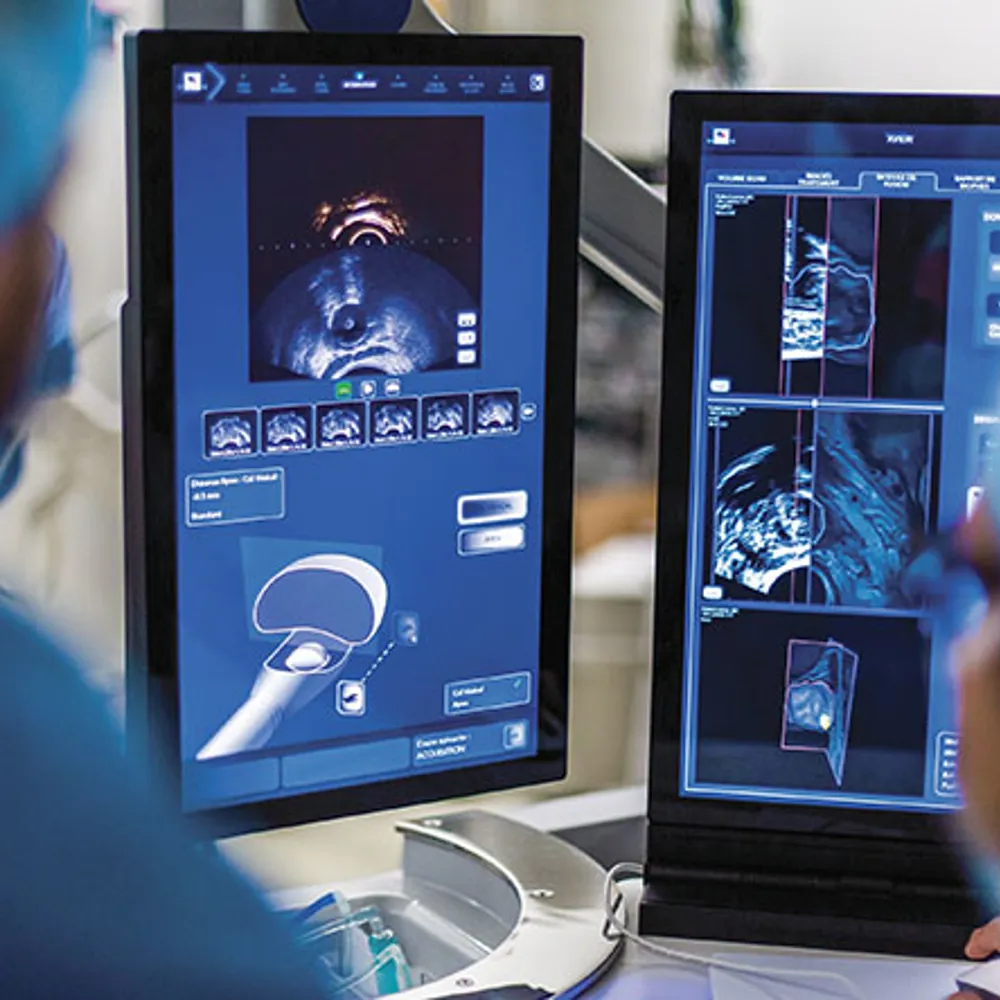This Technology Is Going to Change Health Care
November 19, 2019
- Author: Gary Shapiro and John Grisham


November/December 2019
More articles in this issue:
Tumors. Kidney stones. Parkinson’s tremors. These medical conditions have something important in common. They all have the potential to be treated by an earlystage, noninvasive technology called focused ultrasound. This technology will drastically change health care as we know it — and we both feel a mission to share its existence with the world.
Focused ultrasound (FUS) uses ultrasonic energy to target tissue deep in the body without incisions or radiation. An outpatient treatment, FUS causes minimal discomfort, leaves no scars and involves only short recovery times. Its overall costs are also usually less than other treatments on the market today.

John has been friends with Dr. Neal Kassell, chairman of the Focused Ultrasound Foundation (FUSF), for many years. Kassell repeatedly urged him to sit on the organization’s board — an offer he accepted after both his sister and his mother received diagnoses of cancerous tumors. Their diagnoses and his passion for FUS technology inspired him to team up with Kassell to write The Tumor, a short novel about the power of FUS to save lives. He considers it the most important book of his career — and he is so determined to spread the word about FUS that he is giving it away for free.
As head of CTA, Gary has long had the privilege of seeing how technology is solving major problems in health care. He has seen firsthand how virtual reality can help alleviate post-traumatic stress disorder; how 3D printers can build prosthetic limbs at a fraction of the cost of traditional prosthetics; and how breath sensors can perform rapid health scans by recording key vital signs. Then, a few years ago, he heard about focused ultrasound, and its possibilities were so far-reaching that they eclipsed anything he had seen before.
At CES 2018, John spoke about the power of this innovative new technology and its potential to give individuals grappling with cancer and many other serious diseases longer and better quality lives. There, a shared mission was born.
How FUS Works
The fundamental principle of FUS is analogous to using a magnifying glass to focus beams of sunlight on a single point to burn a hole in a leaf. What this means is that focused ultrasound can gain access to the brain, to tumors, to blood clots and to other areas of the body with extreme precision and accuracy but without harming healthy tissue.
Technologies like this that replace labor-intensive, costly therapies can not only make treatment less painful and more effective for patients, but they can help drive down health care spending. With health care global spending expected to increase 163% between 2014 and 2040, advances in health tech can solve some of the world’s biggest health care challenges. The U.S. alone spends over $3.5 trillion a year — over $10,000 per person — on health care. With 45% of Americans having at least one chronic disease, 75% of U.S. health care spending goes toward the treatments of these diseases.
Progress science has made in FUS development, we need a legislative and regulatory approach that encourages and welcomes this medical technology as a lower-cost, less-invasive alternative to traditional medical treatment. In December, the FDA approved focused ultrasound for tremor-dominant Parkinson’s disease. But this is just the tip of the iceberg. There are dozens of other conditions that can be treated with this technology that are awaiting government approval. For example, while the technology is approved in the U.S. to relieve the pain in patients with bone metastases, focused ultrasound treatment for prostate, breast, liver, pancreatic and kidney cancers has been approved in Europe but not in the U.S.
In order to spur on faster government regulation, we need to bring greater public awareness to the capabilities of focused ultrasound. The sooner we do this, the sooner it can become a widely accessible option for medical care. Today, we’re beginning to understand its full potential — and the possibilities are endless.
Focused ultrasound is the future of health care. It is poised to join hundreds of other life-changing technologies that once seemed like science fiction but are now realities. Not long from now, robots will be mainstays in surgery rooms, genetic mapping will allow for personalized diagnoses and treatment plans, and focused ultrasound will be the treatment of choice for millions of people. This kind of health care means diagnoses that once meant extreme pain or even death can now be cured. Now, let’s make it happen.
__________________________________________________________________________________________________
Gary Shapiro is president and CEO of CTA, and a New York Times best-selling author. His new book, Ninja Future: Secrets to Success in the New World of Innovation, is now available.
John Grisham is a bestselling writer, attorney, politician and activist best known for his popular legal thrillers. His latest book, The Guardians, and free e-book, The Tumor, are available on Amazon.
Technologies like [FUS] that replace labor-intensive, costly therapies can not only make treatment less painful and more effective for patients, but they can help drive down health care spending.
Join our community of innovators and shape the future of technology.



